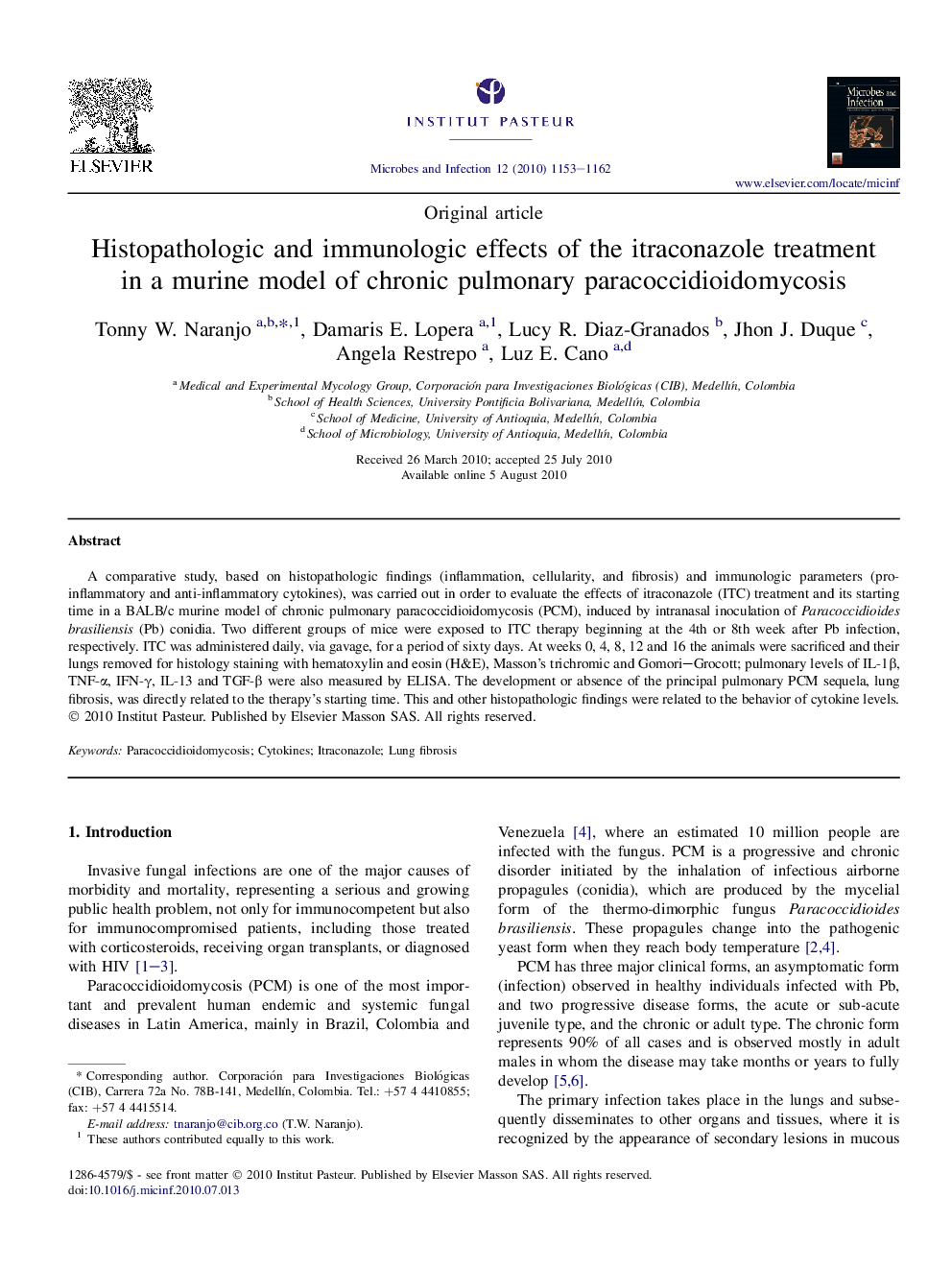| Article ID | Journal | Published Year | Pages | File Type |
|---|---|---|---|---|
| 3415095 | Microbes and Infection | 2010 | 10 Pages |
A comparative study, based on histopathologic findings (inflammation, cellularity, and fibrosis) and immunologic parameters (pro-inflammatory and anti-inflammatory cytokines), was carried out in order to evaluate the effects of itraconazole (ITC) treatment and its starting time in a BALB/c murine model of chronic pulmonary paracoccidioidomycosis (PCM), induced by intranasal inoculation of Paracoccidioides brasiliensis (Pb) conidia. Two different groups of mice were exposed to ITC therapy beginning at the 4th or 8th week after Pb infection, respectively. ITC was administered daily, via gavage, for a period of sixty days. At weeks 0, 4, 8, 12 and 16 the animals were sacrificed and their lungs removed for histology staining with hematoxylin and eosin (H&E), Masson’s trichromic and Gomori–Grocott; pulmonary levels of IL-1β, TNF-α, IFN-γ, IL-13 and TGF-β were also measured by ELISA. The development or absence of the principal pulmonary PCM sequela, lung fibrosis, was directly related to the therapy’s starting time. This and other histopathologic findings were related to the behavior of cytokine levels.
